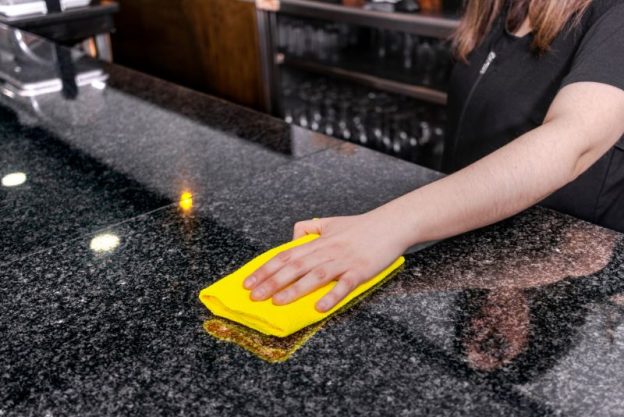In the intricate world of stone maintenance, understanding the type of stone used is essential as it directly influences the cleaning and care regimen you’ll need to adopt. If you’re grappling with this issue, especially in the absence of records, there are a few steps you can take to identify whether your stone is siliceous or calcareous.
-
Consult a Stone Expert
Firstly, it’s advisable to seek the counsel of a professional stone supplier, installer, or restoration specialist. Their expertise can provide invaluable assistance in identifying the nature of your stone, thus steering you towards the correct maintenance approach.
-
Visual Identification
While expert advice is invaluable, a visual inspection can also offer clues:
- Granites typically display a crystal pattern or small flecks and possess minimal veining.
- Limestones, commonly used as a building stone, often have grey, tan, or buff colours. A key feature to look out for is the presence of shell and/or fossil impressions.
- Marbles are characterised by their veined, fine texture and are available in a wide range of colours.
- Slates come in dark green, black, grey, dark red, or multicoloured varieties. They are recognised by their distinct cleft texture and are popularly used in flooring and roofing.
-
The Acid Sensitivity Test
*Perform at your own risk as this can damage your stone surface*
A more hands-on approach involves conducting a simple acid sensitivity test to determine the stone’s classification. For this, you’ll need 4 ounces of a 10% solution of muriatic acid or household vinegar, along with an eyedropper. Remember to perform this test in a discrete area, like a corner or closet, and away from any mortar joints. The reactions you observe will be telling:
- A vigorous fizzing or bubbling indicates a calcareous stone.
- Little to no reaction suggests a siliceous stone.
Note: This test might be ineffective on surfaces treated with sealers or polishes. In such cases, try applying the acid solution to a chipped piece of stone. Also, bear in mind the hazardous nature of muriatic acid; appropriate protective gear is essential and perform at your own risk.
Determining the type of stone in your building might seem daunting, but it’s a crucial step in ensuring its longevity and beauty. Whether through visual inspection, professional consultation, or the acid sensitivity test, understanding your stone’s nature allows for informed decisions regarding its care and maintenance. If unsure, or if you’re uncomfortable performing these tests, it’s always important to consult with a stone care professional. Call Marble Everlast today on 0451 090 900




